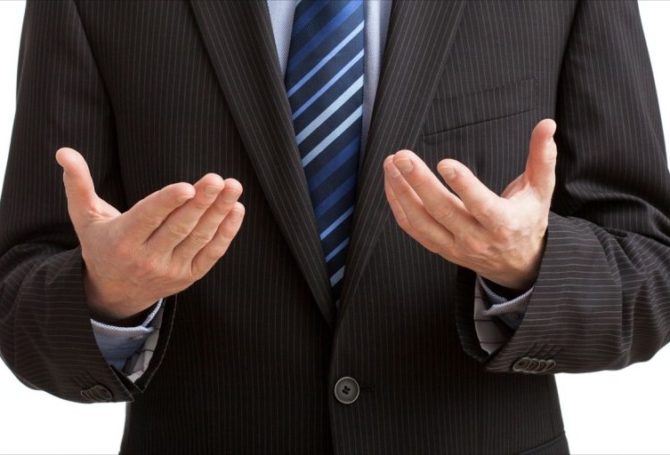
Speaking without words is not a parlor trick. People do it all the time. And we usually understand exactly what their body language is saying.
Body language very likely predates spoken language as humans show their emotion through gestures. After verbal language was invented, body language didn’t disappear. It kept on conveying emotions as well as reinforcing and underscoring our words.
Humans haven’t lost their evolutionary training to look for meaning as much as listen for it. Psychological studies confirm people remember a lot more of what they see than what they hear. In that regard, body language may be more important in communicating meaning than verbal language.
“Unspoken messages matter. As carefully as a speech may be written, what speakers communicate with their body language and physical appearance – from the waving of a hand to the twitch of a lip – often sticks with viewers more so than any turn of phrase.”
The goal of “speaking well” is to harness a speaker’s body language to words so they speak in harmony. For example, a CEO announcing layoffs should exhibit empathetic gestures to accompany words no one wants to hear. Effective media training includes evaluating and improving an individual’s vocal tics, facial expressions, body posture and hand gestures.
The Mentalist, a TV drama that ran for seven seasons, features Simon Baker as a self-admitted psychic fraud who exercises his keen observation of body language to unmask murderers. Baker’s character is based on real-life mentalist Keith Barry.
“Every thought that you have translates into a physical reaction,” Barry says. “If you can learn to read that physical reaction, even if it is minute, then you can actually figure out what someone is thinking by reading a person’s muscle tone.”
Luckily, you don’t have to be a gifted mentalist to perceive meaning from everybody’s everyday body language. You learn by watching people for pretty much all your life – and, as Sherlock Holmes noted, to observe, not merely see.
It helps to have someone point out body language meaning, which is what Joe Navarro, an ex-FBI agent and author of The Dictionary of Body Language, did in a Politico story published after the Democratic and Republican presidential conventions. The self-described “specialist in nonverbal communication” watched video clips of key speakers with the sound muted to see how well their gestures matched their words.

You can read his article for observations of specific speakers – from Nancy Pelosi’s arched eyebrows to Kimberly Guilfoyle’s effusive arm gestures. His contrast of President Trump and Joe Biden is especially interesting. More generally, Navarro wrote, “These unspoken messages matter. As carefully as a speech may be written, what speakers communicate with their body language and physical appearance – from the waving of a hand to the twitch of a lip – often sticks with viewers more so than any turn of phrase.”
The contrast between speeches by Kellyanne Conway and Congressman Dan Crenshaw illustrate Navarro’s thesis that gestures communicate much more than words.
- Navarro said Conway, Trump’s former campaign manager and long-time White House counselor who announced before the convention she was departing, uncharacteristically spoke with her arms at her side. “The human brain seeks to see the hands,” Navarro said. “Public speakers usually use [their hands] to communicate effectively. I’ve seen her talk to the media at the White House, but here we see a much more restrained face and, most noticeably, her arms don’t leave her side.”
- Watching Crenshaw, a rising GOP political star, speak on mute, Navarro viewed him as confident as he spoke with “open palms in the vertical receptive position”. “He comes across as cool, calm and collected.” Crenshaw’s nonverbal communication shouts, “Listen to me because I’m important. Without knowing anything about him or his politics, I can tell that he’s a leader.”
Interpreting body language comes with a full coat of pre-conceived notions, beliefs and biases. For example, the subconscious scrutiny of male and female speakers does not use the same measuring stick. Cultural differences reflected in dress and speaking styles also trigger ingrained impressions. Aware speakers either leverage or compensate for those biases in how they present themselves to audiences.
Body language is never silent, even when no words are spoken. How you look when not speaking is a form of silent expression that can transmit clear, unmistakable messages.
Sharpening your observation skills to detect body language signals can yield greater insight into what speakers say and mean. Becoming aware of your own body language is essential to improving your skill as a speaker and presenter.




